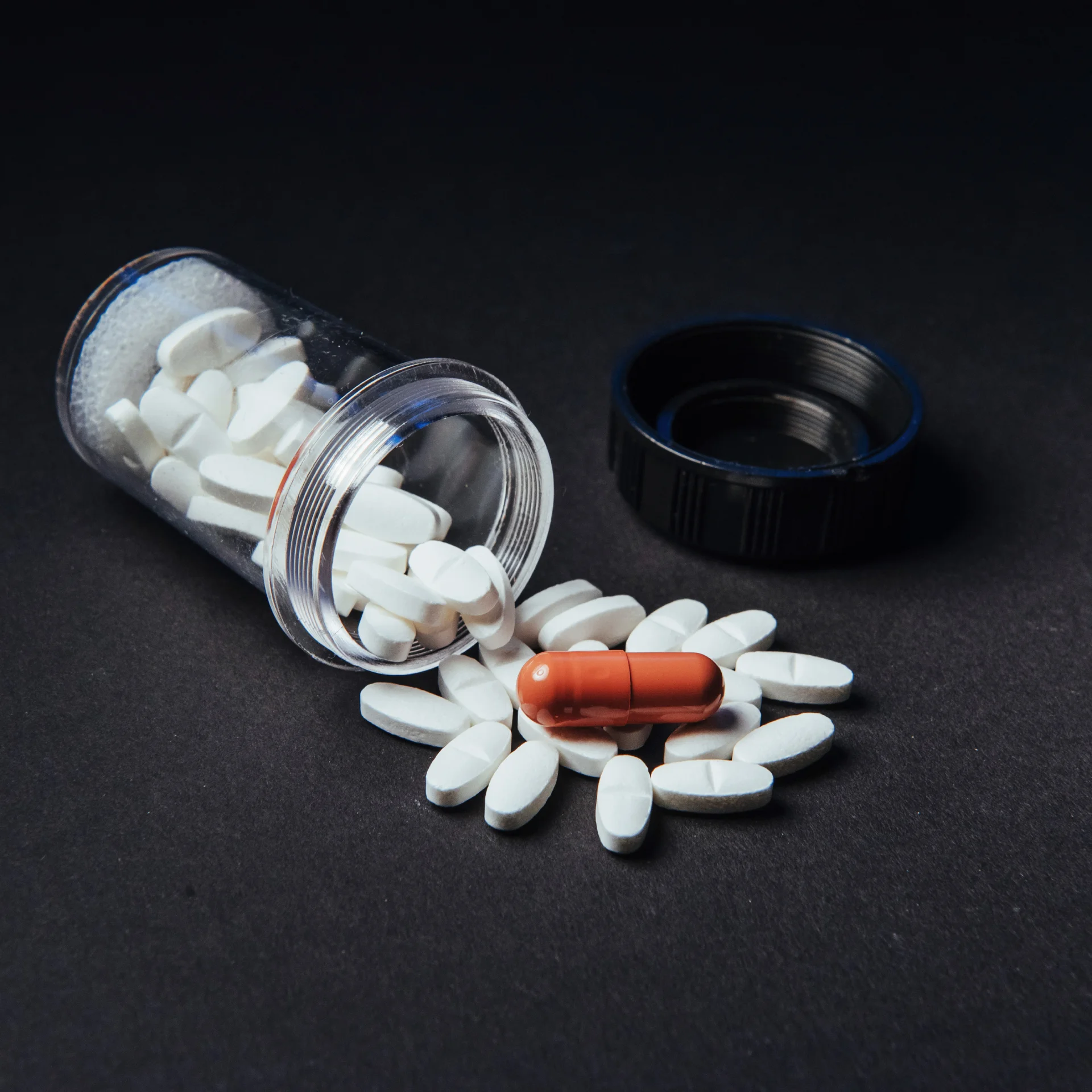Xanax Bars Addiction Treatment in Long Island
A Long Island focused guide to Xanax bars that explains how alprazolam addiction develops, warning signs, overdose and counterfeit pill risks, safe taper and detox, proven therapies, and local treatment options. We connect you with licensed programs near you that accept your insurance.
Covered by most insurance plans
Available to help you 24/7
Table of Contents
Xanax bars are the 2 mg scored tablet form of alprazolam, a prescription benzodiazepine used for anxiety and panic disorders. While many Long Islanders receive it by prescription, others obtain it informally through friends, family, or the street. Because alprazolam is potent and fast acting, misuse can quickly lead to tolerance, dependence, and addiction. Long Island Addiction Resources connects local residents with nearby licensed programs that match their needs and insurance coverage. We are a confidential referral service, not a treatment facility.

What Are Xanax Bars? Strength, Effects, and Street Names
Xanax bars are elongated tablets with four scored sections so one bar can be split into halves or quarters. Each bar typically contains 2 mg of alprazolam. Common slang terms include planks and zanies. Like other benzodiazepines, alprazolam depresses the central nervous system and can reduce anxiety, some seizure activity, and muscle tension when used as directed.
How Xanax Affects the Brain
Alprazolam enhances the activity of GABA, a neurotransmitter that dampens excessive brain signaling. At the right dose this calms anxiety. If the dose is too high, people may feel overly sedated, unsteady, or mentally foggy. Repeated exposure can cause the brain to adapt, raising tolerance. Some individuals begin taking larger or more frequent doses to feel the same relief, increasing the risk of misuse and addiction.
How Addiction Develops
Addiction is a chronic brain condition characterized by compulsive use despite harm. It can begin with prescribed use that gradually becomes heavier or with nonmedical use. People may escalate doses during stressful events, take the medication more often than prescribed, or use it without a prescription. When a person recognizes harm yet cannot stop, a substance use disorder may be present and professional help is recommended.

Warning Signs of Xanax Misuse
- Changing friend groups, secrecy, or avoiding family
- Doctor shopping or using someone else’s prescription
- Empty pill bottles or closely guarding pills
- Excessive sleepiness, slurred speech, poor coordination
- Mood swings, memory and concentration problems
- Work or school problems, legal or financial issues
- Neglecting hygiene, irregular eating or sleeping
Why Misuse Is Dangerous
- Overdose risk High doses can slow breathing and heart rate. Risk increases when combined with alcohol or opioids.
- Polysubstance danger Many fatal opioid overdoses also involve benzodiazepines. Combining substances multiplies risk.
- Counterfeit pills Street bars that look like Xanax may contain fentanyl or other unknown substances, greatly increasing overdose risk.
- Cognitive effects Long term heavy use can contribute to memory and attention problems.
Withdrawal and Detox on Long Island
Stopping alprazolam suddenly can trigger withdrawal ranging from anxiety and insomnia to tremors, nausea, and in severe cases seizures or psychosis. A medically supervised taper is the safest approach. Clinicians may transition to a longer acting benzodiazepine and reduce the dose gradually while providing monitoring, sleep and anxiety support, and care for co occurring conditions.
Treatment Options Near You
- Medical detox and stabilization Supervised taper plans, symptom management, and safety monitoring.
- Inpatient or residential rehab Twenty four hour structure, therapy, and medical oversight for higher risk or unstable environments.
- Partial Hospitalization Program Daytime treatment with evenings at home.
- Intensive Outpatient Program Several therapy sessions per week while maintaining work or family responsibilities.
- Outpatient care and aftercare Ongoing counseling, medication management when appropriate, peer support, and relapse prevention planning.
We help you compare programs across Nassau and Suffolk, verify insurance benefits, and choose a level of care that fits your schedule and goals.

Therapies That Support Recovery
- Cognitive Behavioral Therapy Identifies thought patterns and behaviors that sustain use and builds healthier coping skills.
- Dialectical Behavior Therapy Teaches emotion regulation, distress tolerance, and interpersonal effectiveness.
- Trauma informed care Addresses past trauma that can drive anxiety and misuse.
- Family therapy Improves communication and boundaries, reduces conflict, and strengthens support at home.
- Peer and community support Mutual aid groups, recovery coaching, and sober activities reinforce change.
Dual Diagnosis Care
Anxiety, depression, PTSD, and other mental health conditions often occur alongside benzodiazepine misuse. Effective treatment addresses both at the same time through coordinated psychiatry and therapy. Medications for anxiety may be adjusted to safer regimens while nonpharmacologic strategies are strengthened.
Types, Colors, and Safety Considerations
Pharmacy dispensed alprazolam comes in various shapes and colors, including white, blue, and green tablets with different strengths or release profiles. Visual appearance is not a reliable safety check. Counterfeit bars are common in illicit markets and may contain fentanyl. Never trust unknown pills and avoid mixing alprazolam with alcohol, opioids, or other sedatives.
Common Side Effects
- Drowsiness, dizziness, dry mouth, constipation
- Changes in libido, difficulty urinating
- Serious reactions can include confusion, hallucinations, jaundice, or fainting. Seek urgent medical care for signs of overdose such as extreme drowsiness, confusion, impaired coordination, or loss of consciousness.
Finding Help on Long Island
Long Island Addiction Resources is not a treatment facility. We listen to your needs, verify your insurance, and connect you with nearby licensed programs for detox, inpatient, outpatient, dual diagnosis care, and recovery support. Confidential help is available.
Start today
If you or a loved one are ready to end your alcohol and drug use, there are many recovery options available near you in Long Island
Rehab Programs
Are you ready to take back control over your life?
Making the decision to seek help is one of the hardest and bravest steps you can take. We know that the recovery process is not always easy—there may be challenges along the way—but every step forward brings you closer to a life free from the weight of addiction.
Find treatment options covered by insurance















Let today be
your Day 1
We'll get on a call, assess your health history, and verify your insurance. Today is Day 1. We can't wait to celebrate Day 1000 with you!
Fill out this simple form and we’ll call you right back.
Frequently Asked Questions
We'll get on a call, assess your health history, and verify your insurance. Today is Day 1. We can't wait to celebrate Day 1000 with you!
What are Xanax bars and why are they risky
Xanax bars are 2 mg alprazolam tablets scored into four sections. They are potent, can build tolerance quickly, and are often counterfeited on the street, which raises overdose risk.
Why is mixing Xanax with alcohol or opioids so dangerous
All are central nervous system depressants. Together they can slow breathing to dangerous levels, leading to overdose, brain injury, or death.
How does Long Island Addiction Treatment Resources help
We are not a rehab. We listen to your goals, verify insurance benefits, and connect you with nearby licensed programs that fit your needs and schedule.
How long does recovery take
Detox and tapering can take weeks to months depending on dose and duration of use. Rehab and outpatient care vary by individual needs, followed by ongoing aftercare to support long term recovery.
Can I stop taking Xanax suddenly
No. Abrupt discontinuation can cause severe withdrawal, including seizures. A medically supervised taper is the safest approach.
